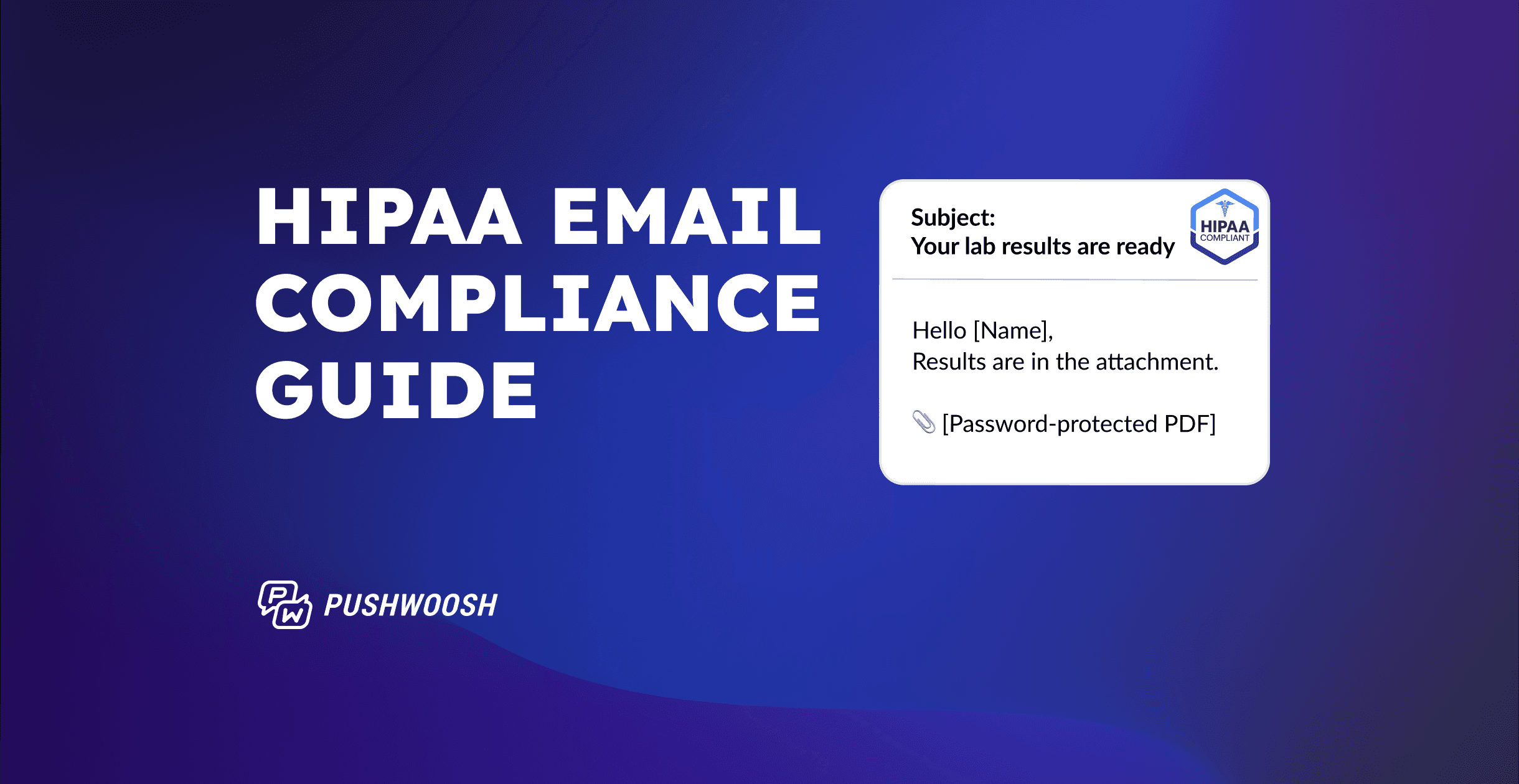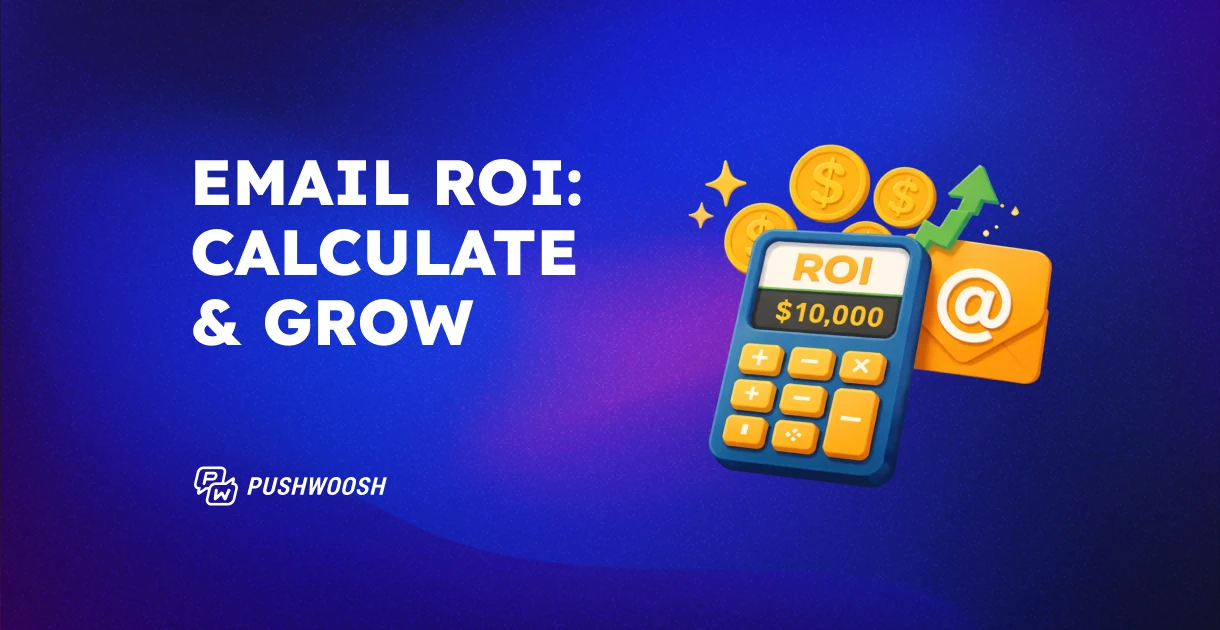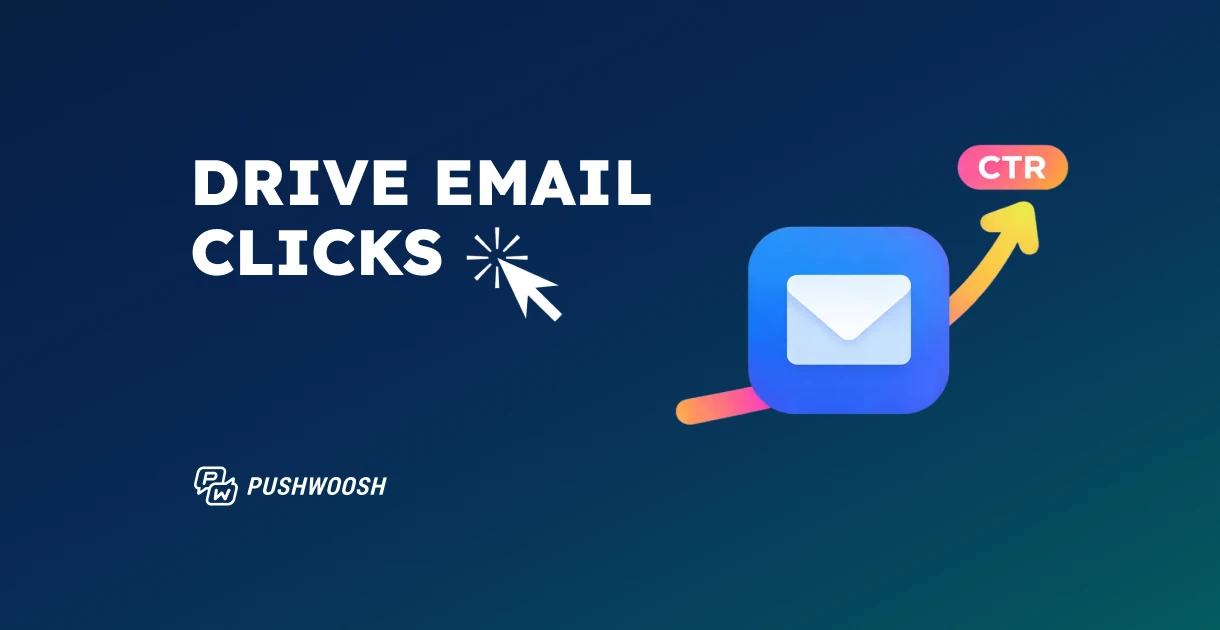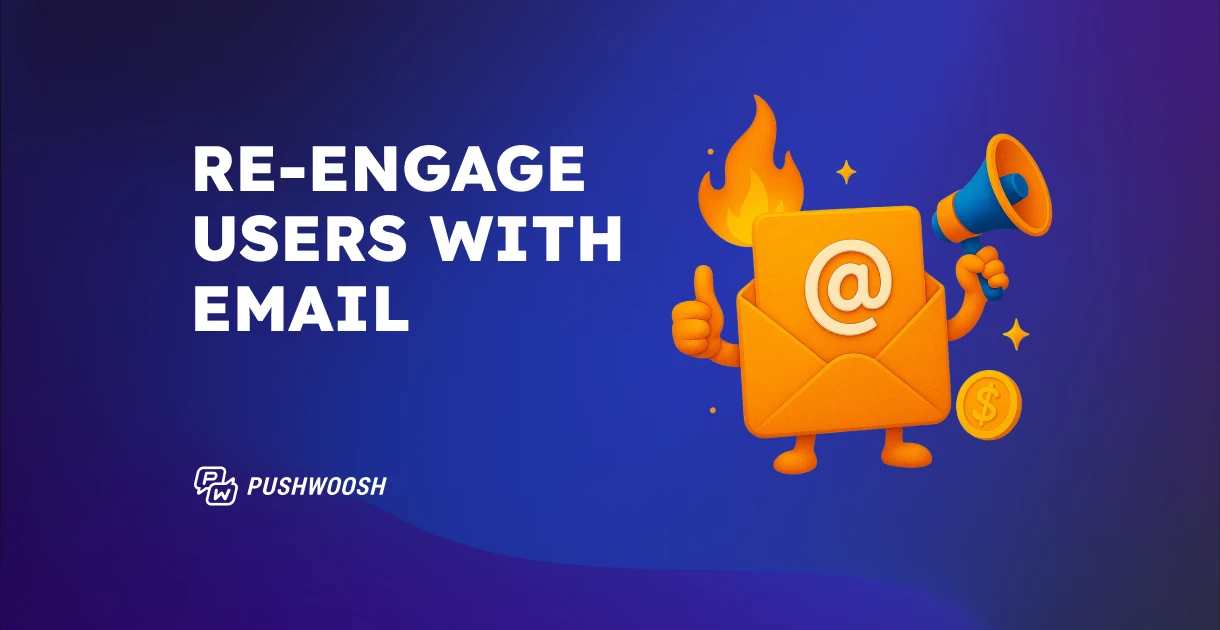How to send HIPAA-compliant emails: Tips for secure engagement & protecting patient privacy
When you hear “HIPAA,” you’re most likely thinking traditional healthcare. But the sector where HIPAA compliance is required is broader than that, reaching across healthtech, wellness, and even nutrition. If your app is offered by a licensed medical provider and bills insurance, it likely falls under HIPAA, even if it’s mobile-first.
Much like GDPR, HIPAA compliance isn’t optional: a single non-compliant message can lead to severe penalties. The good news is that you don’t have to trade compliance for performance—or stick with outdated tools. In this post, we’ll cover how to maximize your HIPAA-compliant emails, choose the right HIPAA-compliant email service, and achieve secure messaging that protects sensitive patient data.
What is HIPAA-compliant email?
HIPAA stands for the Health Insurance Portability and Accountability Act that governs how protected health information (PHI) is collected, stored, and shared.
Building a HIPAA-compliant email strategy means ensuring your messages adhere to the rules for safely handling health-related information. If an email contains anything linked to a user’s health, it needs to be protected with strong email encryption and access controls.
It also involves using a HIPAA-compliant email provider; otherwise, you put your users’ data—and your company—at serious legal risk.
HIPAA compliance hinges on three key rules:
1. The Privacy Rule
This defines what counts as PHI and how it must be handled. It includes obvious data like diagnoses and prescriptions, but also any health-related data tied to an identifiable user, such as:
- A fitness tracker summary showing an increased heart rate during sleep
- A chat message from a mental health app user
- A telehealth platform’s follow-up email referencing a missed appointment
If this type of data is being sent over email, it must be secured by HIPAA email encryption.
2. The Security Rule
This governs the safeguarding of electronic PHI (ePHI). It requires:
- Administrative safeguards – policies, training, and internal oversight;
- Physical safeguards – secure data centers and device policies;
- Technical safeguards – encryption requirements, access controls, and audit logging.
For mobile apps and cloud-based platforms, technical safeguards are the frontline defense against exposure of sensitive information.
3. The Breach Notification Rule
If ePHI is exposed—whether through hacking, mishandling, or a misdirected email—HIPAA requires timely notification of the breach. That includes informing affected users, regulators, and in some cases, the media.
Prevention is critical.
Common misconceptions about HIPAA and email
“We’re not a hospital—this doesn’t apply to us.”
Wrong.
HIPAA isn’t just for hospitals. If you handle any health-related data on behalf of a covered entity (like a clinic or an insurer) or if you collect PHI yourself through an app, you may be classified as a “business associate” under HIPAA. Here are a few examples of apps that may fall under its scope:
- Telemedicine and virtual care apps
- Pharmacy platforms and prescription delivery
- Mental health and therapy services
- Fitness, wellness, and health coaching apps
- Medical devices or remote monitoring tools
- Health-adjacent e-commerce (e.g., DNA testing kits, nutritional supplements)
- Insurance and benefits platforms
- Any CRM or customer messaging platform handling medical-related support
In each case, if data tied to a user’s health is stored or sent, HIPAA applies.
“HIPAA is only about medical records.”
HIPAA is about all sorts of patients’ (or users’) identifiable private health data that can be accidentally exposed, including:.
- Fitness data — heart rate logs, calorie intake, step count, sleep patterns, etc.;
- Customer support chats and insights from them;
- Behavioral in-app data, such as search and app usage history, that potentially reveals a health condition or a treatment plan.
- Email content – A mismatch in the recipient’s name or unintentional exposure of health data in the subject line can trigger a breach. Stay alert to all the potential violations.
Why do HIPAA violations happen over email?
Standard email isn’t encrypted end-to-end, meaning PHI can be intercepted or exposed.
Unlike app-based or authenticated messages, email can land in an unsecured inbox, appear in previews, or be forwarded without restrictions. Subject lines can be read before encryption kicks in, and attachments can be downloaded on shared devices.
That’s why email requires extra controls—like HIPAA email encryption, neutral wording, secure portals, and consent-aware automation—to prevent accidental PHI exposure.
Here are some common examples that could be easily overlooked:
| Common email HIPAA violations | Solution for email marketers |
|---|---|
| Including PHI in subject lines e.g., “Your HIV test results are ready” | Use neutral subject lines like “Your results are available” and direct users to a secure portal for details. |
| Sending unencrypted emails with PHI | Use an email provider with encryption both in transit (TLS) and at rest (AES-256). Pushwoosh ensures encrypted delivery. |
| Misdirected emails (sent to the wrong user) | Use verified contact lists, double opt-ins, and suppress inactive or invalid addresses to avoid mismatches. |
| Unsecured attachments (e.g., lab results, medical records) | Send PHI as password-protected PDFs or link to secure, authenticated pages—never embed PHI in the email body. |
| Using platforms without a signed BAA | Ensure your email service provider offers and signs a Business Associate Agreement (Pushwoosh does). |
| Using personal or non-secure email accounts (e.g., Gmail) | Centralize all email activity in a HIPAA-compliant platform with proper access controls and monitoring. |
| Forwarding PHI internally without access control | Set clear internal permissions and use role-based access to ensure only authorized staff can view PHI. |
| Lack of audit trails or delivery logging | Choose a provider that tracks message access, delivery status, and logs user interactions for audit readiness. |
| Embedding PHI in URLs or tracking links | Use encrypted dynamic links and avoid exposing diagnoses or identifiers in query strings or preview text. |
| Sending segmented health-related campaigns without consent | Ensure opt-in consent is gathered for each channel and maintain accurate, synced user preference data. |
Best HIPAA-compliant email providers
Choosing the right HIPAA-compliant email provider is essential to guarantee that protected health information (PHI) is secure and to prevent costly violations. Here are some trusted options:
Paubox – a popular encrypted email service for healthcare that works directly in your existing inbox. Paubox encrypts all messages automatically and meets HIPAA secure email requirements without forcing patients to log into a separate portal.
Hushmail – provides HIPAA-approved email with secure web forms, two-factor authentication, and strong email encryption to protect sensitive information.
LuxSci – a provider known for advanced email security measures, customizable access controls, and Business Associate Agreements (BAAs) for healthcare organizations.
Best solution for apps: Pushwoosh – combines encrypted emails with other channels (like push notifications, SMS, and in-apps), making it an all-in-one HIPAA-compliant email marketing automation tool to engage patients across multiple channels securely.
What to look for in a HIPAA-compliant email service
Encryption (in transit and at rest)
Both the message and stored data must be encrypted using industry-standard protocols (e.g., TLS, AES-256).
✅ Pushwoosh uses robust encryption across all channels to ensure PHI is never exposed.
Access control and audit trails
You need to control who accesses PHI—and be able to prove it. Audit logs help demonstrate compliance.
✅ Pushwoosh provides detailed access logging and flexible permission settings for each team member or system integration.
Business Associate Agreement (BAA)
HIPAA requires a signed BAA between covered entities and their service providers.
✅ Pushwoosh offers a BAA for eligible customers.
Secure data hosting
PHI should be stored in physically secure, monitored environments—ideally within HIPAA-compliant infrastructure.
✅ Pushwoosh hosts data in compliant environments with physical and network-level security protocols in place.
Only necessary data use
Only the minimum amount of PHI should be used or stored for a specific task.
✅ Pushwoosh supports scoped data handling and granular targeting to meet this principle.
Consent and preference management
Users must willingly opt in to communication channels, and it should be easy to opt out. This applies to email, push, SMS, and in-app notifications.
✅ Pushwoosh centralizes consent management across all messaging channels, respecting user privacy settings at scale.
Deliverability and performance
HIPAA compliance is pointless if your messages land in spam. Deliverability is essential.
✅ Pushwoosh ensures 97% deliverability with smart sender reputation tools and email best practices.
But the real challenge is that email is rarely your only point of contact.
How HIPAA-compliant email APIs work
For many healthcare organizations, the most efficient way to send secure messages is through an API. It allows developers to integrate secure, encrypted communication into healthcare apps and platforms. Here’s how it ensures compliance:
Access controls: APIs authenticate users and restrict access so only authorized staff can send or view sensitive patient data.
Encryption requirements: messages and attachments are protected using AES-256 encryption in transit and at rest.
Audit logging: every message event is recorded, providing an auditable trail to meet HIPAA regulations.
🛠️ Pushwoosh’s API enables healthcare organizations to automate secure appointment reminders, lab results notifications, and patient engagement campaigns.
Why HIPAA compliance is especially tricky for mobile apps
Challenge #1: Multiple tools
Customer data isn’t siloed—it moves across your CRM, messaging platforms, databases, and analytics tools.
The consequences?
- Many tools only encrypt data in one direction
- Few offer true audit trails or access controls
- Cross-channel opt-in/opt-out preferences can be difficult to sync
- Most channels aren’t HIPAA-compliant by default
Challenge #2: Multiple channels
Your marketing strategy likely spans across several touchpoints, like push notifications, in-app messages, SMS, email, etc.
This omnichannel approach improves engagement, but it also fragments compliance. HIPAA compliance isn’t channel-specific—it’s system-wide. One unsecured channel can break the chain and expose all of your communication to legal and regulatory risk.
HIPAA-compliant omnichannel messaging: Going beyond email
Most “HIPAA-compliant email providers” stop at the inbox. Pushwoosh goes further as an officially certified HIPAA-compliant email marketing automation tool that integrates secure email with push notifications, SMS, WhatsApp, and in-app messaging, giving healthcare organizations a single platform to achieve HIPAA compliance across channels.
Let’s walk through a few real-world use cases when omnichannel HIPAA-compliant messaging is required:
Use case 1: Medication reminders
Your app falls under HIPAA, and you want to schedule a reminder for your app’s users to take their medication—via a push notification, an email, or an in-app message, depending on their preferred channel. It seems simple, but because this reminder is directly tied to a person’s health and identity, it counts as PHI under HIPAA.
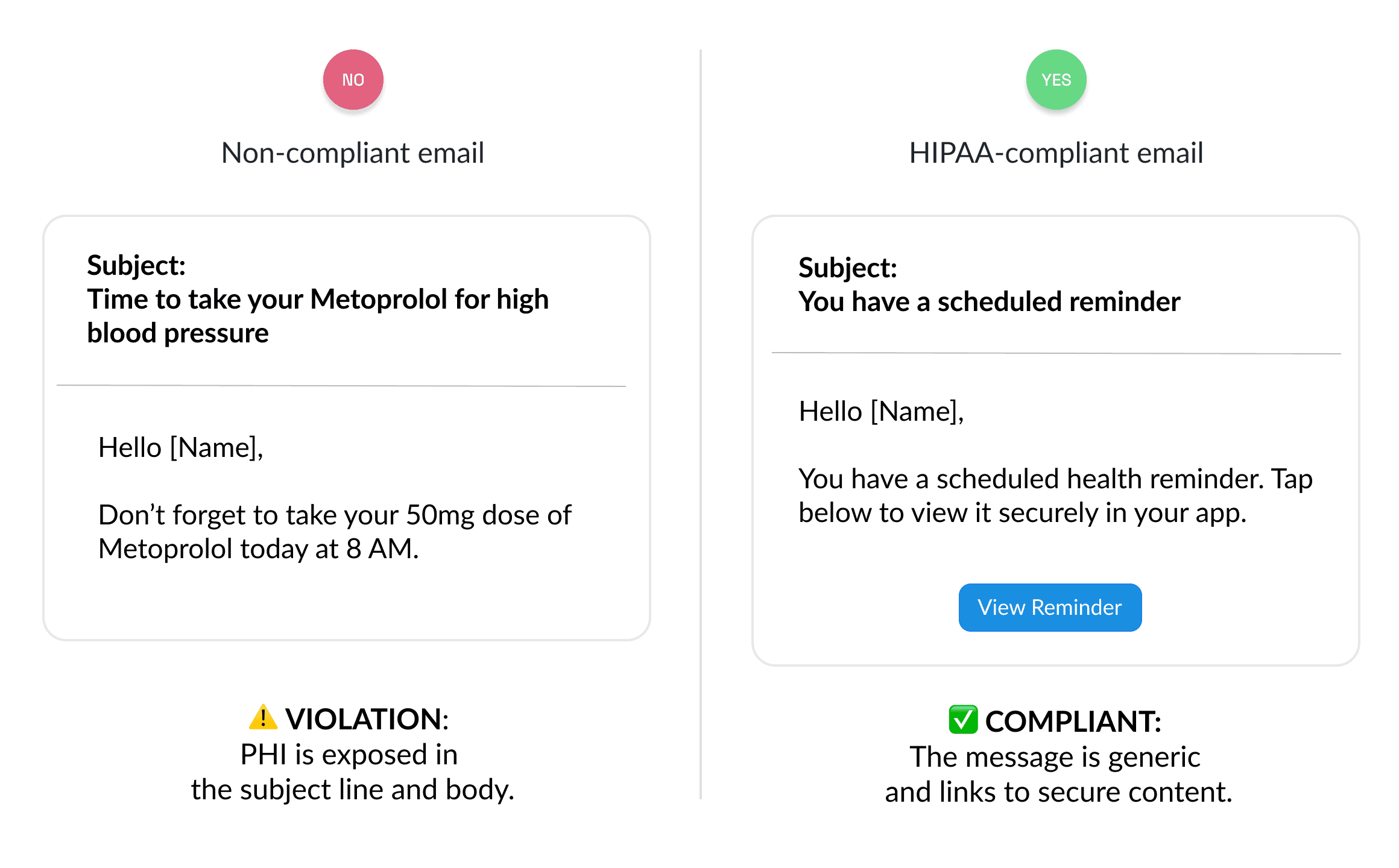
The challenge:
Too much detail in the wrong place: Push notifications or emails that include medication names or conditions (e.g., “Time to take your blood pressure pill”) may expose PHI if previews are visible on a locked screen or shared device.
Unsecured delivery: If the reminder is sent through a provider that doesn’t support encryption or access control, the data could be intercepted or misused—leading to a breach.
The solution:
- Use neutral notification text (e.g., “You have a scheduled reminder”) and direct users to secure in-app content.
- Set up event-based automations that send reminders at the right time, based on user preferences and consent.
- Ensure all messages travel through HIPAA-compliant infrastructure with encryption at rest and in transit.
Use case 2: In-app health surveys
You want to collect health-related feedback or symptom check-ins through in-app surveys—perhaps to track mood, pain levels, or post-visit recovery. This data helps you personalize care or assess treatment outcomes, but because it relates to a person’s health and is tied to their identity, it qualifies as PHI.

The challenge:
- Unprotected survey submissions: If the data users submit isn’t encrypted or access-controlled, it could be exposed in transit or at rest.
- Lack of auditability: Without detailed logging, it’s hard to prove who accessed the data, when, and why—something HIPAA auditors require.
The solution:
- Build surveys into secure in-app messages, ensuring responses never travel through unsecured third parties.
- Restrict access to survey results delivered via email using password-protected attachments.
- Use time-based automations to schedule surveys post-interaction (e.g., 24 hours after a telehealth session without disclosing the name of the procedure).
- Track submissions with detailed audit logs and reporting features.
Use case 3: Lab results notifications
You need to notify users when their lab results are available, without revealing sensitive health data in the notification itself. These alerts are high priority, but must be handled with care to avoid exposing diagnosis-related information.
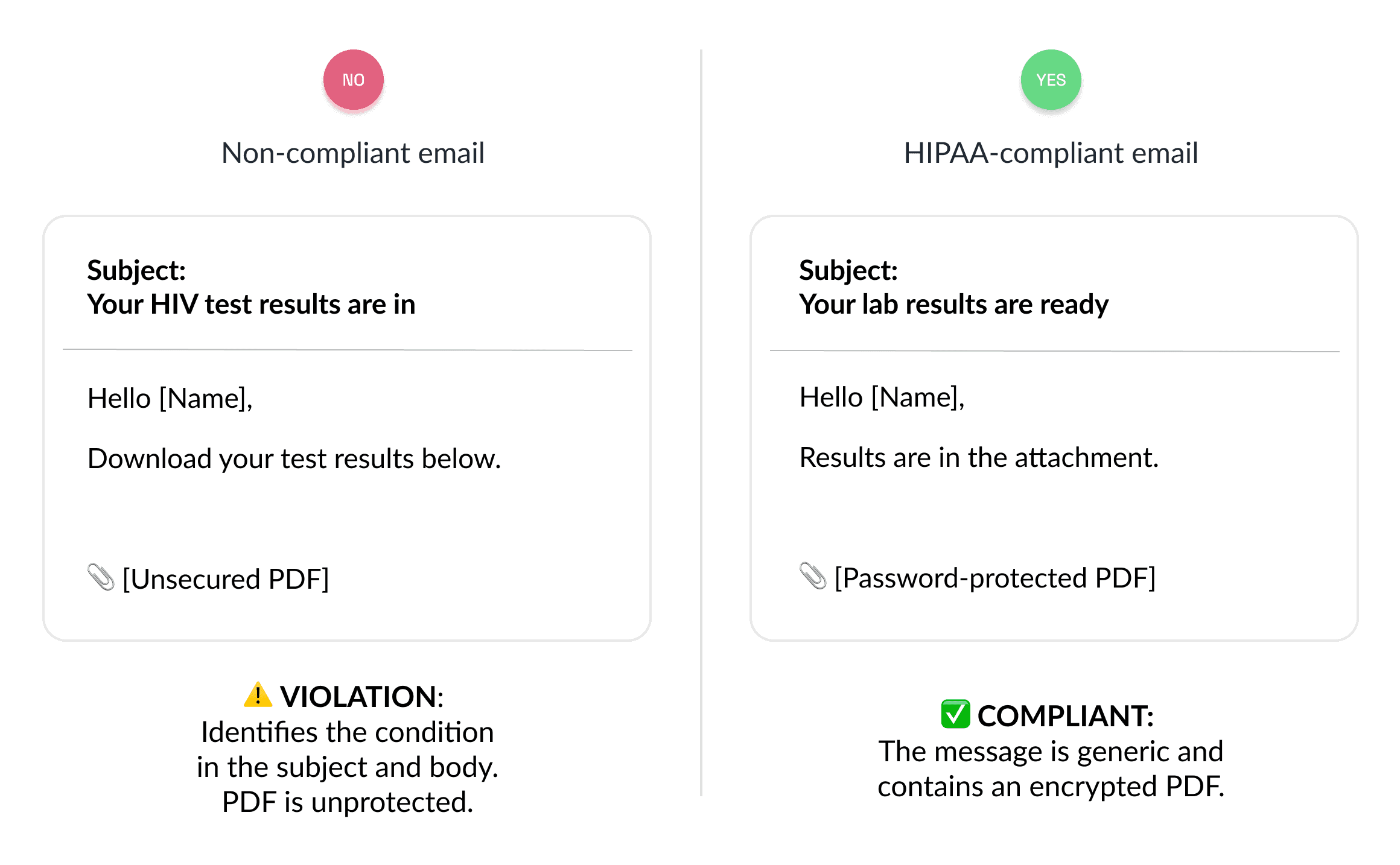
The challenge:
- Sensitive content in subject lines or previews: “Your HIV test results are ready” is a clear HIPAA violation if shown in a push preview or inbox.
- Unsecured click-throughs: If the link in the message goes to a non-encrypted or publicly accessible page, PHI can be exposed.
The solution:
- Send generic messages like “Your results are ready” without referencing the test type or condition.
- Direct users to a secure, authenticated portal using dynamic links generated through Pushwoosh.
- Use user tags and segments to automate follow-ups while keeping message content generalized.
- Enable encrypted click tracking and session-based link expirations for extra security.
Compliance doesn’t mean compromise
You don’t have to choose between HIPAA compliance and great user engagement.
Pushwoosh helps healthcare organizations, therapists, as well as wellness and health-adjacent brands deliver secure, high-performing omnichannel experiences—without sacrificing speed or flexibility.

